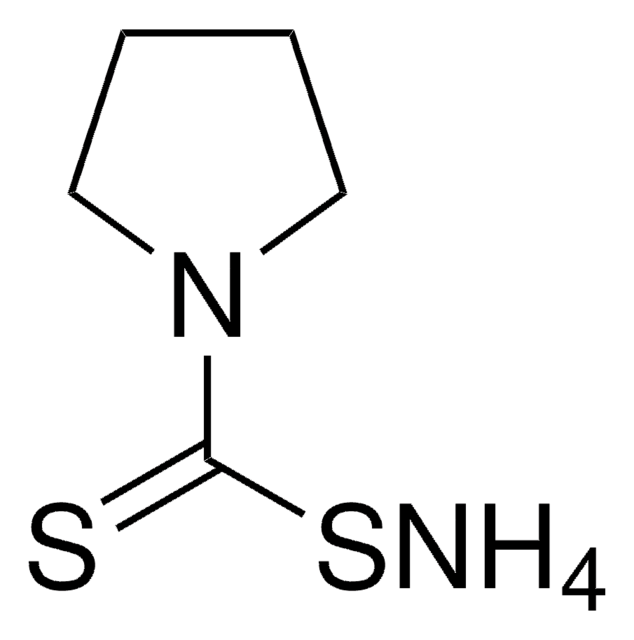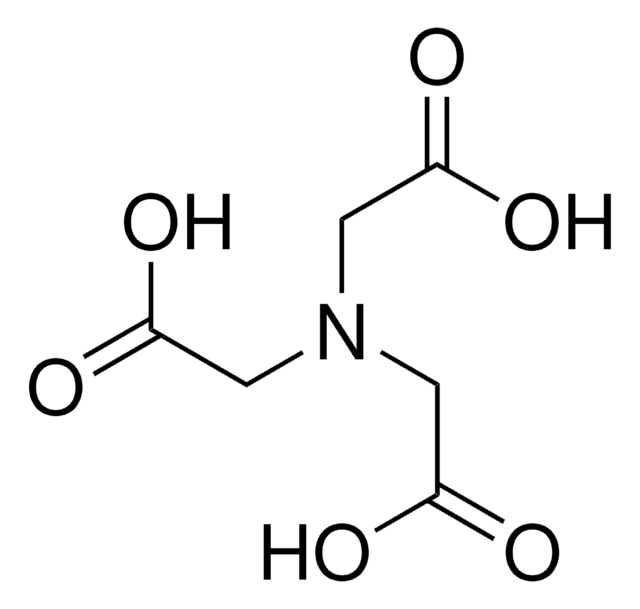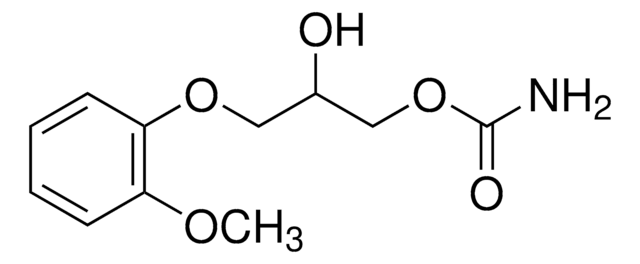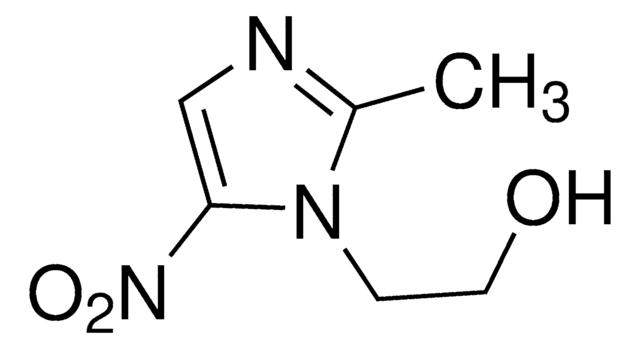Kluczowe dokumenty
1164008
USP
Dapsone
United States Pharmacopeia (USP) Reference Standard
Synonim(y):
4-Aminophenyl sulfone, 4,4′-Diaminodiphenyl sulfone, 4,4′-Sulfonyldianiline, Bis(4-aminophenyl) sulfone, DDS, Dapsone
About This Item
Polecane produkty
klasa czystości
pharmaceutical primary standard
rodzina API
dapsone
producent / nazwa handlowa
USP
mp
175-177 °C (lit.)
Zastosowanie
pharmaceutical (small molecule)
Format
neat
temp. przechowywania
2-8°C
ciąg SMILES
Nc1ccc(cc1)S(=O)(=O)c2ccc(N)cc2
InChI
1S/C12H12N2O2S/c13-9-1-5-11(6-2-9)17(15,16)12-7-3-10(14)4-8-12/h1-8H,13-14H2
Klucz InChI
MQJKPEGWNLWLTK-UHFFFAOYSA-N
Szukasz podobnych produktów? Odwiedź Przewodnik dotyczący porównywania produktów
Powiązane kategorie
Opis ogólny
Zastosowanie
- Dapsone Tablets
- Dapsone Compounded Oral Suspension
Komentarz do analizy
Inne uwagi
produkt powiązany
Hasło ostrzegawcze
Danger
Zwroty wskazujące rodzaj zagrożenia
Zwroty wskazujące środki ostrożności
Klasyfikacja zagrożeń
Acute Tox. 4 Oral - Aquatic Chronic 2 - Repr. 1B - STOT RE 2 - STOT SE 2
Organy docelowe
Blood, Blood,spleen,Liver
Kod klasy składowania
6.1C - Combustible acute toxic Cat.3 / toxic compounds or compounds which causing chronic effects
Klasa zagrożenia wodnego (WGK)
WGK 3
Temperatura zapłonu (°F)
Not applicable
Temperatura zapłonu (°C)
Not applicable
Wybierz jedną z najnowszych wersji:
Certyfikaty analizy (CoA)
Przepraszamy, ale COA dla tego produktu nie jest aktualnie dostępny online.
Proszę o kontakt, jeśli potrzebna jest pomoc Obsługa Klienta
Masz już ten produkt?
Dokumenty związane z niedawno zakupionymi produktami zostały zamieszczone w Bibliotece dokumentów.
Nasz zespół naukowców ma doświadczenie we wszystkich obszarach badań, w tym w naukach przyrodniczych, materiałoznawstwie, syntezie chemicznej, chromatografii, analityce i wielu innych dziedzinach.
Skontaktuj się z zespołem ds. pomocy technicznej







